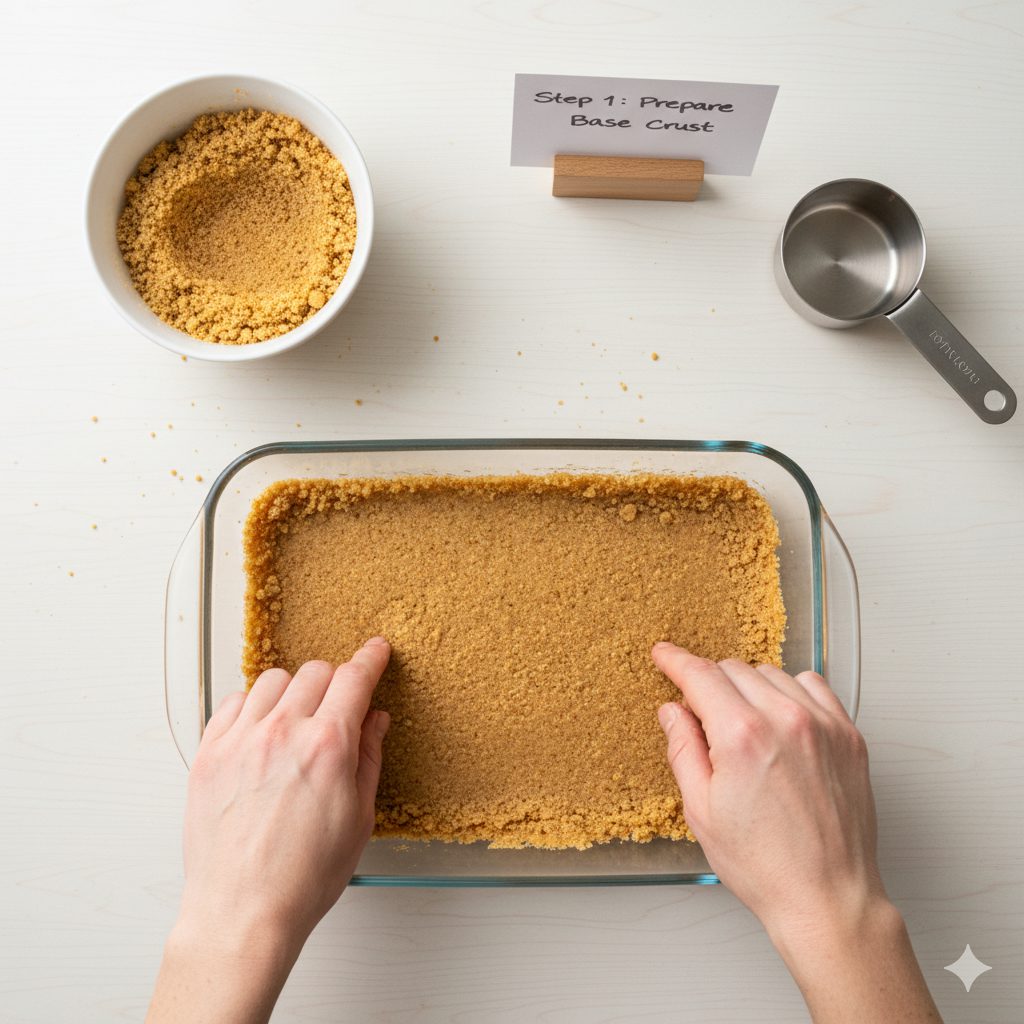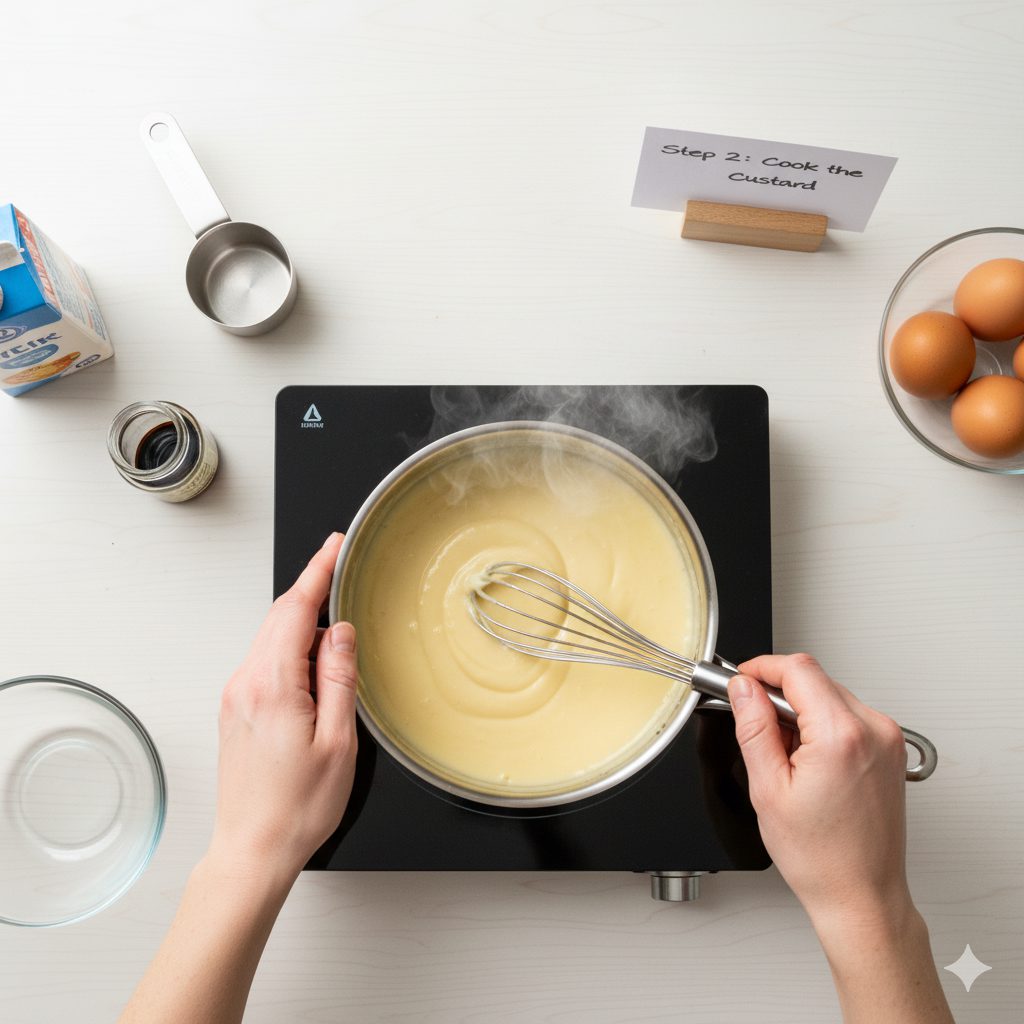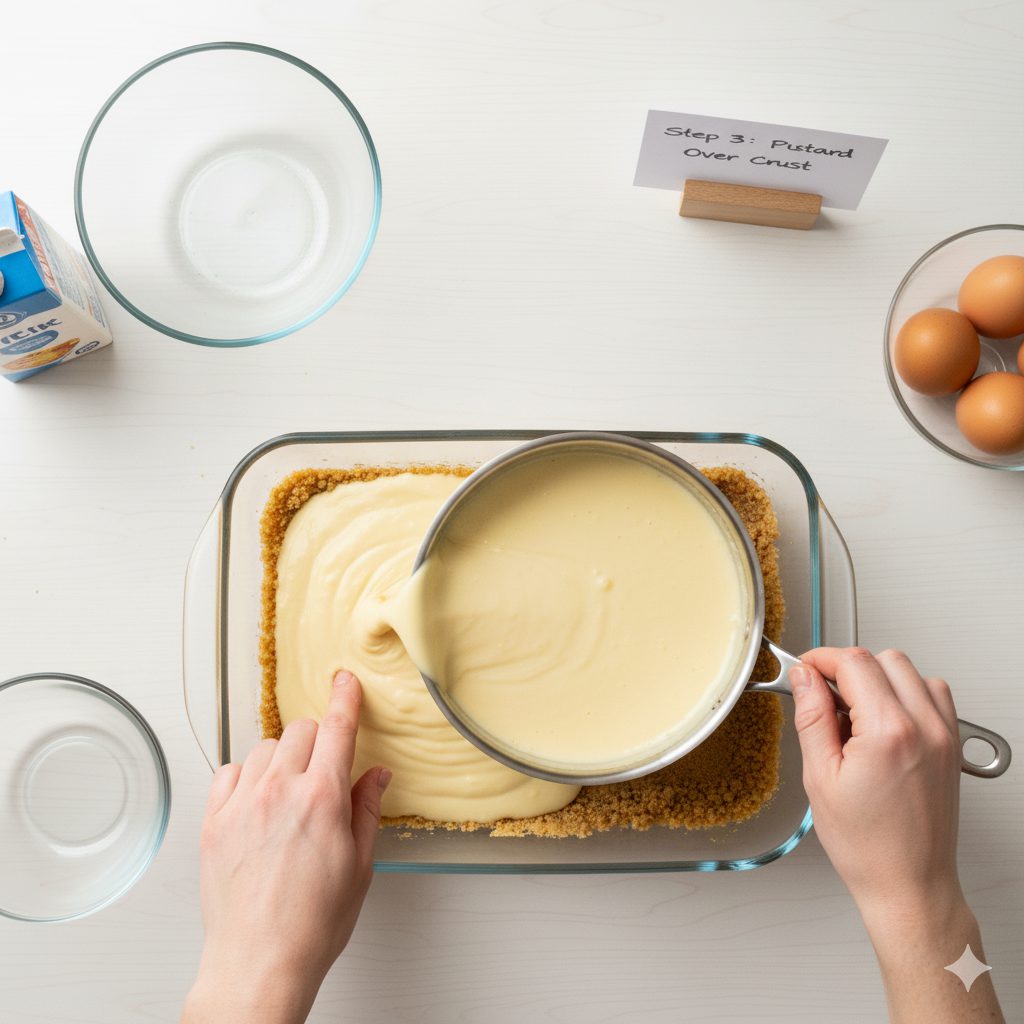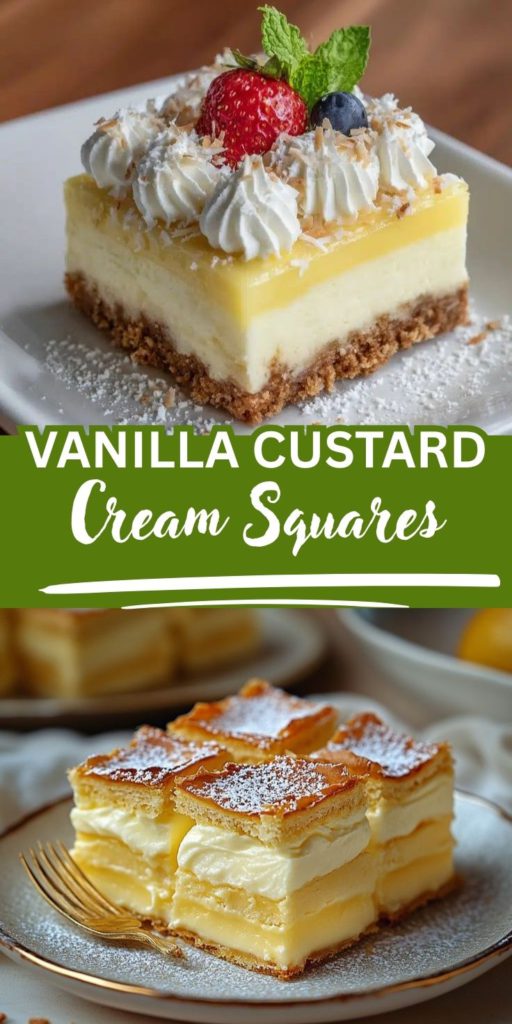Pan Preparation and Oven Setup:

Set your oven temperature to 350 ∘ F (≈175∘C). Prepare a 9×13-inch rectangular baking vessel by fitting it with parchment paper, ensuring the paper extends beyond the sides to form convenient lifting handles.
2 Incorporate the Cold Butter:

Distribute the cold, cubed butter into the dry components. Utilizing a pastry cutter, a pair of sharp knives, or quick motions with your fingers, quickly blend the butter into the flour until the resulting texture mimics damp, gritty beach sand, with small portions of butter no larger than a pea still visible.
3 Pressing and First Bake:

Firmly pack the crumb mixture across the base of the prepared pan. Employ a level-bottomed drinking glass or a flat-surface measuring utensil to achieve an even, densely compressed layer. Place the base in the oven and bake for fifteen minutes, or until a subtle, faint golden color appears around the perimeter.
Servings 4
- Amount Per Serving
- % Daily Value *
- Total Fat 21g33%
- Saturated Fat 12g60%
- Cholesterol 210mg70%
- Total Carbohydrate 37g13%
- Sugars 22g
- Protein 9g18%
* Percent Daily Values are based on a 2,000 calorie diet. Your daily value may be higher or lower depending on your calorie needs.
Note
Expert Tips and Tricks for Flawless Squares
The biggest challenges in creating these bars are achieving a stable custard and a crisp crust. Here are crucial techniques to ensure success:
Perfecting the Shortbread Crust
- Chill the Dough Twice: After mixing the crust ingredients, press the dough firmly into the pan. Refrigerate the pressed crust for at least 30 minutes before baking.
- Blind Bake Thoroughly: The crust must be fully cooked and lightly golden before the custard is added. If the crust is underbaked, it will become soggy when the moist custard is poured on top.
- The Aluminum Foil Sling: Line your baking pan (a 9×13-inch pan is ideal) with aluminum foil or parchment paper, leaving generous overhang on the sides.
Achieving a Silky Custard
- Tempering is Non-Negotiable: When incorporating the hot milk mixture into the egg yolks, you must temper the eggs slowly. Gradually whisk a small amount of the hot liquid into the yolks first to raise their temperature without scrambling them.
- The Sieve Strategy: Even if you feel you tempered the eggs perfectly, always strain the custard mixture through a fine-mesh sieve immediately before pouring it over the baked crust. This removes any stray lumps, residual spice pieces, or small air bubbles, guaranteeing a perfectly smooth, velvety texture.
- The Gentle Bake: Custards require a gentle, even heat to set without cracking or developing a rubbery texture. Use a low oven temperature (around 325∘F or 160∘C).
Serving Tricks and Presentation
These squares are best served cold to maintain their structure.
- The Clean Cut: After the squares have completely chilled for at least 4 hours (or ideally overnight), use the foil sling to lift the entire slab onto a cutting board. To achieve professional-looking squares, use a large, sharp chef's knife. This prevents the creamy custard from sticking to the knife and tearing the subsequent slices.
- Elegant Garnish: Skip heavy whipped cream, which can detract from the delicate vanilla flavor. Instead, opt for a light dusting of powdered sugar (applied just before serving), a sprinkle of toasted, sliced almonds, or a single fresh raspberry placed artfully on top of each piece.
- Temperature Matters: Serve the squares chilled directly from the refrigerator. Allowing them to sit out for more than 30 minutes can soften the custard and make them difficult to handle.
Delicious Flavor Variations
While classic vanilla is superb, the dessert base is easily adapted:
- Citrus Zest Burst: Add the finely grated zest of one lemon or orange to the custard mixture. The citrus oil brightens the richness and adds a fresh aroma.
- Coconut Cream Dream: Replace half of the all-purpose flour in the crust with finely shredded sweetened coconut. Substitute the dairy milk in the custard with an equal amount of full-fat canned coconut milk for a tropical twist.
- Spiced Autumn Custard: For the custard, steep a cracked vanilla bean (instead of extract) in the milk while heating it for an intensely rich flavor.
Storage and Longevity
These custard squares must be kept refrigerated at all times due to the fresh dairy and eggs.
- Refrigeration: Store the cut or uncut bars in an airtight container. They will maintain their best quality for 4 to 5 days in the refrigerator.
- Freezing is Not Recommended: The dairy components can separate, making the custard grainy and watery upon thawing.
Conclusion
The Vanilla Custard Cream Square is an enduring classic because it perfectly marries a tender, buttery base with a simple, luxurious filling. Success lies in patience: ensuring the crust is firm before baking, taking your time while tempering the eggs, and giving the final product ample time to fully chill and set. By following these precise steps—from the initial foil sling to the final warm knife cut—you can consistently achieve a dessert that is not just delicious, but visually and texturally flawless.
Keywords:
Silken Custard, Architectural Dessert, Buttery Shortbread Base, Aromatic Vanilla, Chilled Confection,
Did you make this recipe?
Pin this recipe to share with your friends and followers.


 Set your oven temperature to 350 ∘ F (≈175∘C). Prepare a 9×13-inch rectangular baking vessel by fitting it with parchment paper, ensuring the paper extends beyond the sides to form convenient lifting handles.
Set your oven temperature to 350 ∘ F (≈175∘C). Prepare a 9×13-inch rectangular baking vessel by fitting it with parchment paper, ensuring the paper extends beyond the sides to form convenient lifting handles. Distribute the cold, cubed butter into the dry components. Utilizing a pastry cutter, a pair of sharp knives, or quick motions with your fingers, quickly blend the butter into the flour until the resulting texture mimics damp, gritty beach sand, with small portions of butter no larger than a pea still visible.
Distribute the cold, cubed butter into the dry components. Utilizing a pastry cutter, a pair of sharp knives, or quick motions with your fingers, quickly blend the butter into the flour until the resulting texture mimics damp, gritty beach sand, with small portions of butter no larger than a pea still visible. Firmly pack the crumb mixture across the base of the prepared pan. Employ a level-bottomed drinking glass or a flat-surface measuring utensil to achieve an even, densely compressed layer. Place the base in the oven and bake for fifteen minutes, or until a subtle, faint golden color appears around the perimeter.
Firmly pack the crumb mixture across the base of the prepared pan. Employ a level-bottomed drinking glass or a flat-surface measuring utensil to achieve an even, densely compressed layer. Place the base in the oven and bake for fifteen minutes, or until a subtle, faint golden color appears around the perimeter.

